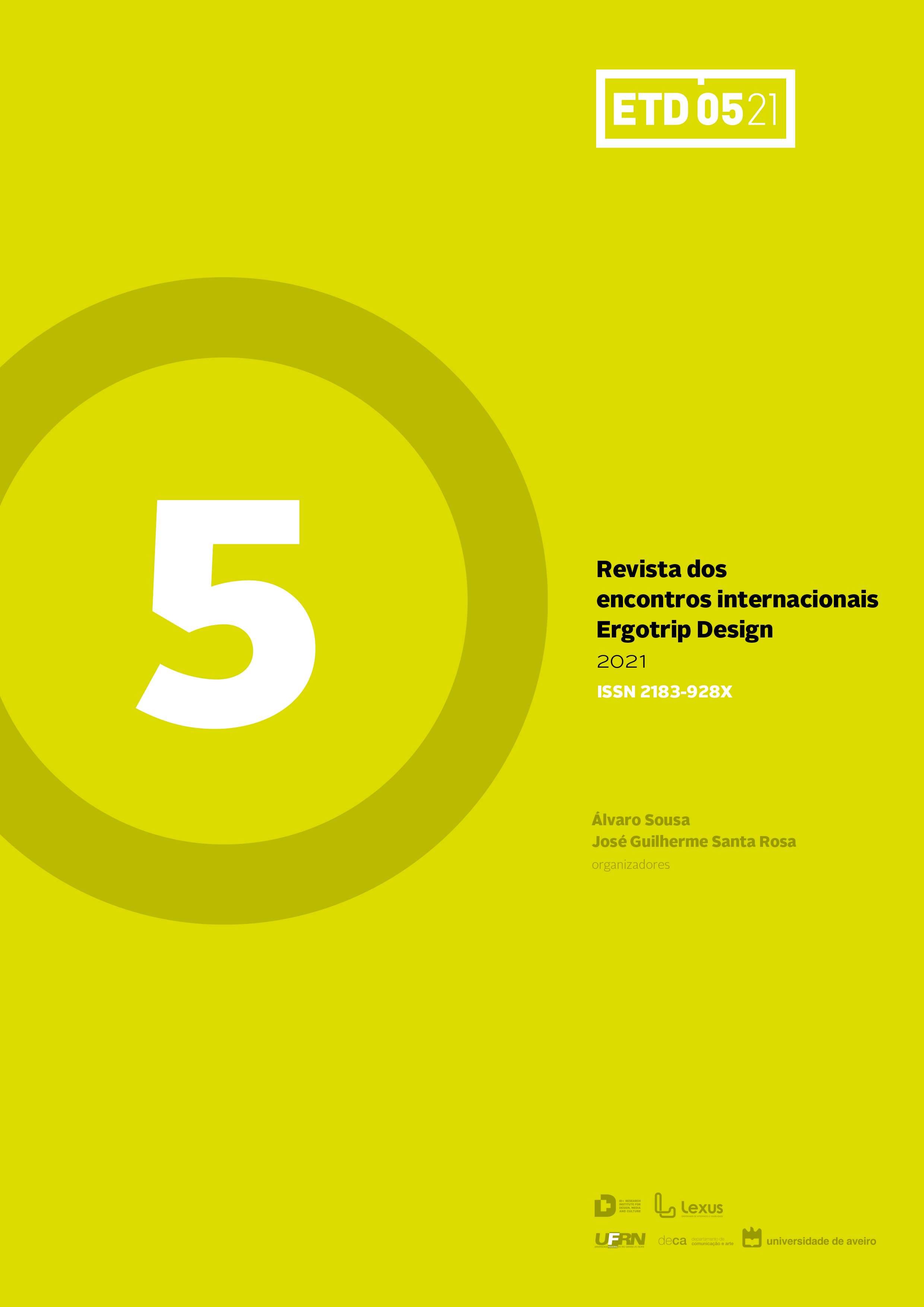Considerações ergonómicas no design de vestuário para seniores – caso de estudo
Resumo
O envelhecimento da população é um fenómeno social caracterizado pelo au- mento da proporção de idosos em relação à população total. Para a Organização Mundial de Saúde um idoso é o indivíduo entre 61 e 75 anos de idade. Diversos aspetos ao nível psicomotor diminuem com o acréscimo da idade, havendo carac- terísticas do corpo que se vão modificar ao longo do tempo. Desta forma estabeleceu-se o foco deste estudo no vestuário para idosos com limitações decorrentes de patologias degenerativas das articulações. O objetivo deste estudo é desenvolver hipóteses de vestuário ergonómico para a população idosa considerando as necessidades físicas e estéticas desta. A metodologia utilizada foi a observação direta que permitiu obter uma perspetiva holística e natural da rotina de vestir/ despir. Numa segunda fase desenvolveu-se um protótipo para validar e aprofundar alguns requisitos formais. Com análise dos resultados obtidos conclui-se que o protótipo cumpriu os objetivos definidos, utilizando a lã como material sustentável e biodegradável assim como permitiu uma maior facilidade na vestibilidade e acessibilidade de pessoas com dificuldades ao nível da motricidade fina.
Referências
BROEGA, A. C., & SILVA, M. E. S. C. (2010). O Conforto Total do Vestuário: Design para os Cinco Sentidos. Actas de Desiño, (9), 59–64. Retrieved from http://repositorium.sdum.uminho.pt/bitstream/1822/19302/1/%5BRef16%5D_Actas de Diseño no 9%2C FPalermo_Conforto_5_Sentidos.pdf
CARNEIRO MUSSI, F. (1996). Comfort: review of the literature. Revista Da Escola de Enfermagem Da U S P, 30(2), 254–266. https://doi.org/10.1590/s0080-62341996000200006
CLEMENTE, S. DOS S. (2012). Estudo de Caso x Casos para Estudo: Esclarecimentos a cerca de suas características e utilização . In U. de C. do Sul (Ed.), VII seminário de Pesquisa em Turismo de Mercosul (pp. 1–12). Carapicuíba: Universidade de Caxias do Sul.
DREYFUSS, H. (1966). The measure of human factors in design. United States.
FALCÃO, S. R. (2011). Autonomia e Movimento do Corpo Idoso - Estudo de Caso -. Retrieved from https://www.repository.utl.pt/bitstream/10400.5/3669/1/Autonomia e Movimento do Corpo Idoso - Estudo de Caso.pdf
GOBBI, A. G., BOSSE, M., & REIS, A. A. DOS. (2014). Ergonomia E Usabilidade Aplicados Ao Projeto De Produto Focado No Usuário Idoso: a Experiência Do Idoso Com Eletrodomésticos E Mobiliários Na Cozinha. (March 2016), 3625–3636. https://doi.org/10.5151/designpro-ped-00305
GRÜNEWALD, V. (1997). Considerações Sobre Ergonomia E Terceira Idade. Retrieved from https://repositorio.ufsc.br/bitstream/handle/123456789/77145/108130.pdf?sequence=1&i-sAllowed=y
INE (2020). Indicadores de envelhecimento. Retrieved November 23, 2020, from https://www.pordata.pt/DB/Portugal/Ambiente+de+Consulta/Tabela
MATOS, D. (2016). Contributo do Design no processo de desenvolvimento de dispositivos médicos. Projeto de um elemento protésico segundo uma abordagem centrada no utilizador. (PhD). Faculdade de Arquitectura da Universidade de Lisboa, Lisboa.
QUEIROZ, M. (n.d.). Doenças reumáticas. Lisboa: Instituto Nacional para a Reabilitação. RODRIGUES, O. I. S. DA. (2011). Ergonomia e Gerontologia face à redução da Acuidade Visual em Idosos Dedicatória. Covilhã.
RODRIGUES, Y., DIAS, L., & VELOSO, A. (2018). Reflexões sobre design e estigma no envelhecimento. Gavagai - Revista Interdisciplinar de Humanidades, 5(2). https://doi.org/10.36661/2358-0666.2018n2.11087
SILVEIRA, F. A., & LEMES, J. S. (2015). Lã: Características e fatores de produção. Archivos de Zootecnia, 64(247), 13–24. Retrieved from https://www.uco.es/ucopress/az/index.php/az/article/view/502
VIANNA, C. M. M. (2016). Questões ergonômicas da relação da idosa com o vestuário. Pontifícia Uni- versidade Católica, Rio de janeiro.
WOLTZ, S. (2007). Vestuário Inclusivo: A Adaptação do vestuário às pessoas portadoras de necessidades especiais motoras. Btaga.
WORLD HEALTH ORGANIZATION. (2002). Active ageing - A policy framework. Madrid.
Direitos de Autor (c) 2021 Revista dos encontros internacionais Ergotrip Design

Este trabalho está licenciado com uma Licença Creative Commons - Atribuição 4.0 Internacional.





